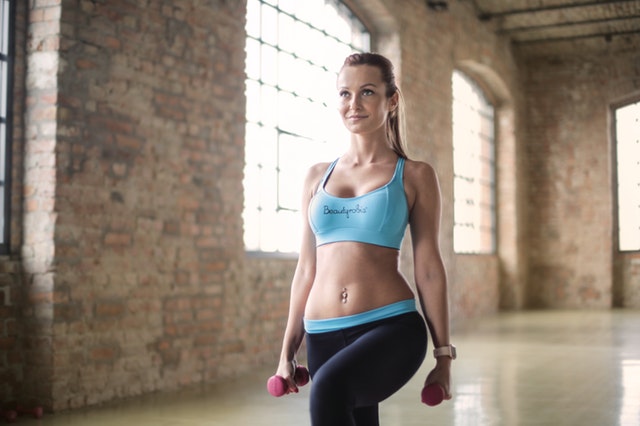
Image Source: Pexels
Losing weight after pregnancy can be a challenge. But it’s not impossible.
We’ve all heard the stories of new mums who regain their pre-pregnancy bodies within weeks of giving birth and although this is possible, it doesn’t happen that way for most women.
In one survey of 1500 mothers, an alarming 7 in 10 said they had pushed themselves to bounce back quickly and lose their baby weight.
The problem is that the speed and degree with which your body bounces back from pregnancy depends on many things including, your weight before you conceived, how much weight you gained during pregnancy, how active you are and, something completely out of your control, your genes.
In other words, though there are some really smart things you can do to lose that post-baby tummy, you really need to be patient with your body. After pregnancy, it takes time for your body, and especially your tummy, to fully recover.
1. Breastfeeding
Particularly in the early months after giving birth, you’ll burn extra calories (about 500 per day) making milk. However, if you eat more calories than you burn, you’ll still manage to put on weight, even if you breastfeed.
It’s fine to lose weight while you’re breastfeeding but remember, you have a newborn to look after, so you’ll also need plenty of energy. Trying to lose weight too soon after giving birth will make you feel even more tired and it’s important not to attempt a very low-calorie diet.
So wait until you’ve had your postnatal checks and the all-clear from your doctor before trying to lose weight.
2. Exercise in Pregnancy
Staying fit during pregnancy can help keep those stomach muscles toned and burn calories. If you exercised all the way through pregnancy, you’ll be able to do some light exercise almost as soon as the baby arrives.
On the other hand, if you stopped exercising during your pregnancy, or have never really been into fitness, you’ll need to incorporate exercise more slowly.
All new mums should begin pelvic floor exercises and work on gently toning their lower tummy muscles as soon as they feel ready.
This will help you to get back to your pre-pregnancy shape sooner and help abdominal muscle recovery.
3. Get Active
Make sure to talk to your healthcare provider before you start exercising following pregnancy. When it’s time to get moving, start slow.
For example, taking your baby out for walks is great for both mental and physical wellbeing. And while it may seem that other women shed their post-pregnancy pounds easily and quickly, the reality is very different so don’t put pressure on yourself.
Particularly if you had gestational diabetes it’s really important to maintain a healthy diet and exercise after the baby is born.
Gestational diabetes in one pregnancy can lead to developing the condition in future pregnancies, as well as type 2 diabetes in later life.
So, make sure you get information about your risk of developing type 2 diabetes in the future.
Gestational diabetes is a signal to make the lifestyle changes you need to help reduce that long term risk of diabetes.
4. Eat Small. Eat Often
If you wait until you’re hungry, you’re more likely to consume way too many calories. Avoid overeating and keep your metabolism up by having five to six small meals throughout the day.
Eating small, frequent meals packed full of the nutrition you’ll need as a busy mum will be the cornerstone of how well you cope with the early days of motherhood.
There are plenty of resources out there if you need guidance about post-pregnancy nutrition. It can be hard to find the time to prepare meals with a new baby at home, so ask family and friends to help you get started.
5. Fibre Is Your Friend
A high fiber diet, approximately 30 grams of fiber each day, has been proven to help with weight loss. It also keeps your digestive system healthy and helps you stay fuller longer.
Make sure you eat lots of soluble fiber foods such as oatmeal, fresh fruits, and vegetables, consume whole grain kinds of pasta and brown rice and choose bread with around 5 grams of dietary fiber per slice.
Snacks offer another opportunity to consume fiber, whole fruit, nuts, and seeds, which are good options, as are dried fruit, popcorn, veggies slices or whole-grain crackers.
6. Love Protein
The body uses protein in cell maintenance and repair but it can also help with weight loss. Protein will not only make you feel fuller longer than both carbohydrates and fat but also affect our hormones that control hunger.
High-protein foods burn the most calories during digestion compared to carbs and fats and also aids with muscle development. To add more protein to your diet replace fatty meats with leaner options like chicken and fish and wild salmon, which is also a great source of Omega-3s.
7. Smart Snack
Replace sugary snacks with fruits to satisfy sweet cravings. Try swapping chocolate for frozen grapes or banana with peanut butter for a healthy alternative. Keep lots of fruit and veggies handy for snacks or throwing together salads or stir-fries.
It’s also helpful to have lots of high-fiber, low-fat snacks in the home and avoid buying things like ice cream and chips. In a survey of 1200 moms, 53% ate more junk food as snacks after having children.
Try to choose food that will sustain you and stay away from foods high in saturated fats like soft drinks, desserts, fried foods, cheese, whole milk, and fatty meats.
8. Go H2O
Apart from keeping us alive and helping our body function effectively, good hydration is a really important part of weight loss, aiding digestion and suppressing appetite.
A quick way to check for dehydration is to press your skin and if it doesn’t spring back quickly, you probably need to drink more water. It’s good to aim for eight glasses a day.
9. Get Support
People don’t always know when we’re struggling or need a bit of support, so it’s really important to have conversations with friends and family about what you need from them.
Whether it’s keeping the junk food out of the house or making sure you get time for some self-care, even if that just means having someone take care of the baby while you take a walk or a nap, make sure you’re getting the support you need as well.
What To Watch Out For
We’ve shared some of the smartest ways to lose weight following pregnancy but sometimes things are a little more challenging.
For instance, postpartum you may also notice a bulge developing on the front of your tummy, just above and below your belly button or your tummy muscles may feel very slack, thanks to being overstretched during pregnancy.
The medical term for this is diastasis recti, sometimes described as abdominal separation and happens when the stomach muscles separate.
This gap often returns to normal, naturally, within the first eight weeks after giving birth or with some specific exercises.
However, if the size of the gap hasn’t decreased or you’re concerned, you might want to visit a medical practitioner. Treatments can include physiotherapy and cosmetic surgery, usually as a Tummy Tuck
The condition isn’t harmful, but it can lead to chronic back pain and will make it harder for you to regain a flat tummy.
About The Author:
Dr. Beldholm FRACS, FACCS is a specialist surgeon with decades of experience in the field of cosmetic surgery. Putting the needs of his patients first, Dr. Beldholm takes immense pride in the success of both his practice and his highly qualified team of experts, utilizing the most advanced surgical techniques and continually providing his patients with the results they desire. Follow him on Facebook, LinkedIn, Instagram, Pinterest & Youtube.




